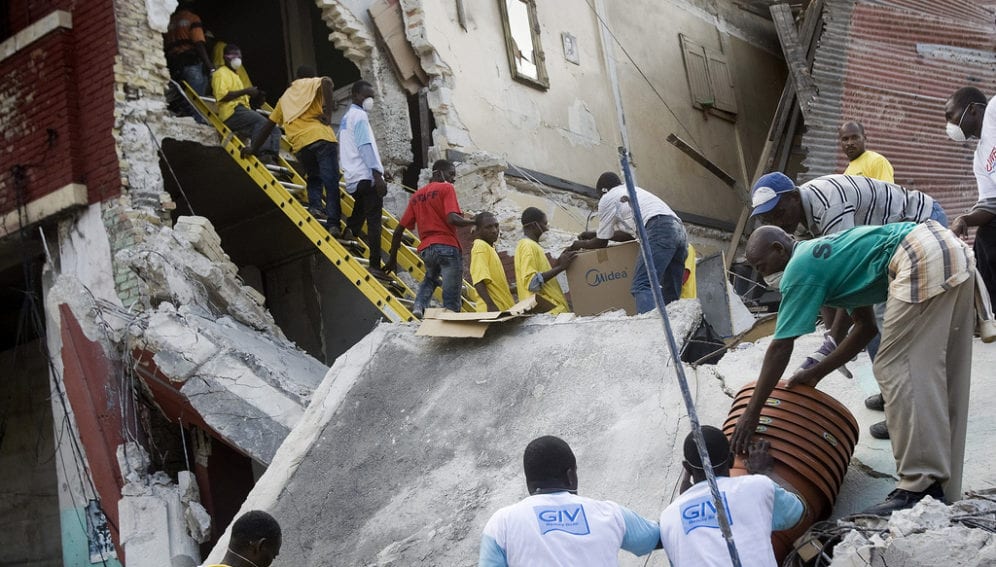By: Lou Del Bello
Send to a friend
The details you provide on this page will not be used to send unsolicited email, and will not be sold to a 3rd party. See privacy policy.
Earthquake risk in developing countries is predicted to rise significantly and so more effective mitigation strategies that combine scientific evidence with economic incentives are needed, according to a paper published today in Science.
The rising risk is outpacing risk reduction efforts and the UN is unlikely to meet its goal of substantially reducing losses from earthquakes by 2015, as set out in the Hyogo Framework for Action, the paper says.
"The task of reducing earthquake risk must be viewed not as just an engineering and scientific challenge but also as a sociological and psychological one," it says.
Human and economic losses due to earthquakes are growing as risk exposure rises in parallel with the population, says the paper's author, Brian Tucker, president of the NGO GeoHazards International.
And, he adds, these losses are increasingly concentrated in developing countries due to population growth in cities and the poor quality of earthquake-resistant construction there.
For example, similar magnitude earthquakes killed 11 per cent of exposed people in Haiti, but only 0.1 per cent in Chile — a country which, unlike Haiti, had developed and enforced earthquake construction codes. This means that Haitian buildings are 100 times more lethal than those in Chile.
The paper also says that the average number of deaths per earthquake in developing countries such as Afghanistan, China, India, Iran and Pakistan is about 90 times as high as in developed regions, such as California, in the United States, or Japan.
"It's important to be under no illusion that the [Hyogo] framework will succeed in slowing down this trend," Tucker tells SciDev.Net. "Once that is admitted, we can then think of what can be done about it."
The paper suggests financial incentives to enforce building codes, for example by encouraging UN agencies and international corporations to purchase and rent only those buildings that are earthquake-resistant. And local governments could reduce property taxes on such structures.
"This is a long-term strategy that won't immediately help the poor," Tucker concedes, "but it would be a step in the right direction. As long as we continue to see risk preparedness as a mere humanitarian issue without considering the crucial economic and political implications, we won't succeed."
He says it is difficult for local politicians to design long-term strategies as there is no public recognition of their future benefits. Meanwhile, he says that "international representatives, who call for earthquake preparedness at an international level, don't usually follow up on the idea in their own countries".
Ian Main, professor of seismology and rock physics at the University of Edinburgh in the United Kingdom, agrees that damage caused by natural disasters are likely to increase in the future.
"But we need to bear in mind that earthquakes don't kill people directly," he adds. "It's always the building [that kills people]."
Main says that in developing countries, where many structures are being built from scratch, implementing risk-preparedness measures would be relatively cheap.
"Retrofitting an existing building is much more expensive. Therefore the development stage is the best moment to act," he tells SciDev.Net. "Risk preparedness can't be ignored, because in the long run damages will cost more than preventive measures."
Tiziana Rossetto, reader in earthquake engineering at University College London, United Kingdom, says that the Hyogo Framework cannot be considered a failure.
"It is important to work to ambitious goals, and the problem is so wide that we can't expect to find the ultimate solution within a decade," she tells SciDev.Net.
She says that Tucker's suggestion of promoting seismic preparedness through economic incentives tackles only a part of the problem.
"The psychological dimension and local context are extremely important," she says. "Any solution needs to be tailored to facilitate dialogue and cooperation between local governments, urban planners, developers and citizens."
So far, she says, scientists have been making recommendations without getting involved in the political and social dimensions of the problem.
"The progression towards risk reduction must be participatory," she adds. "Raising awareness is important but, at the same time, we should help local communities implement practical measures and education schemes."
See below for a video about the Hyogo Framework for Action:














